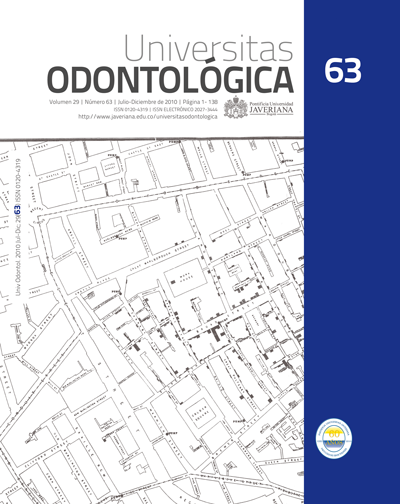Abstract
Objective: Estimate the cost of dental care generated by the dental decay prevalence in high school students at Universidad Nacional Autónoma de México (UNAM). Methods: A cross-sectional study was carried out with a population of 78,870 high schoolers (conducted between the years 2003 and 2005). The need for dental caries treatment was determined by the decayed, missing and filled teeth index (DMFT) as it is indicated at the Automated Medical Exam (EMA, acronym in Spanish). The estimation of dental care cost included a combination of direct (dental materials) and indirect costs (protection barriers) per tooth and treatment needed, using the price list for patients attending the dental service at the dental school of UNAM as a reference. Results: 47.3% of the students presented dental cavities, 31.9% lost teeth, and 59.1% had fillings. Minimum dental care expense estimated for decayed teeth (105,029) was Mexican pesos 27,832,685 and 77,878,530 for lost teeth (101,802). Statistically significant differences were found when comparing dental caries prevalence and gender. Conclusions: The high dental care costs estimated for the population of high school students studied makes relevant the need for the development of programs and goals at the secondary and tertiary education levels. They should emphasize self-care.
This journal is registered under a Creative Commons Attribution 4.0 International Public License. Thus, this work may be reproduced, distributed, and publicly shared in digital format, as long as the names of the authors and Pontificia Universidad Javeriana are acknowledged. Others are allowed to quote, adapt, transform, auto-archive, republish, and create based on this material, for any purpose (even commercial ones), provided the authorship is duly acknowledged, a link to the original work is provided, and it is specified if changes have been made. Pontificia Universidad Javeriana does not hold the rights of published works and the authors are solely responsible for the contents of their works; they keep the moral, intellectual, privacy, and publicity rights.
Approving the intervention of the work (review, copy-editing, translation, layout) and the following outreach, are granted through an use license and not through an assignment of rights. This means the journal and Pontificia Universidad Javeriana cannot be held responsible for any ethical malpractice by the authors. As a consequence of the protection granted by the use license, the journal is not required to publish recantations or modify information already published, unless the errata stems from the editorial management process. Publishing contents in this journal does not generate royalties for contributors.


